El son de la malinche or "The Malinche’s Song"
Opening Sequence: Standard.
Dance pattern: Son de la malinche doesn't use the same kind of winding and unwinding choreography as la ese and la mudansa. Rather, it is a series of processional patterns. Following the standard opening procession, each line acts separately as a unit, the left line led by the monarca, the right by the malinche and abuelo. Sometimes the abuelo faces backward as he leads the malinche. At other times he leads the girl with his hand around her back or on her shoulder. The processional patterns are as follows.
I. Both lines cast off to the outside (Figure 13).
II. At the back of the hall, the lines file by each other, the monarca’s line to the outside of the malinche’s (Figure 14).
III. Continuing, the lines pass each other again at the front of the hall, again with the monarca’s line passing to the outside of the malinche’s (Figure 15).
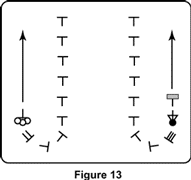
|
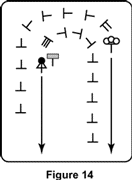
|
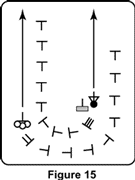
|
IV. As the two lines reach the back of the hall again, they cast off outward and file down to the front. Monarca’s line is left, malinche’s right (Figure 16).
V. At the front, the lines cast off outward again and file to the back (Figure 17).
VI. Reaching the back, the lines now cast off inward (Figure 18).
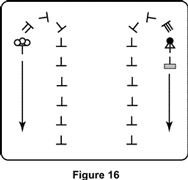
|
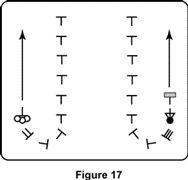
|
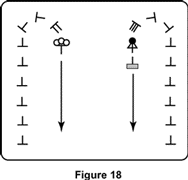
|
VII. At the front, both lines veer left and file up the left side of the hall, the malinche’s line going around outside the monarca’s (Figure 19). The monarca's line edges inward, right, toward the center to make room. The effect is that the outside line encloses the inside.
VIII. At the back, the malinche’s line still outside the monarca’s, the lines file down the right side of the hall (Figure 20).
IX. Up front again, the monarca’s line now circles outside the malinche’s as they turn right to dance back up the right side of the hall (Figure 21).
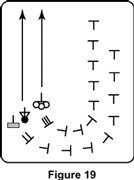
|
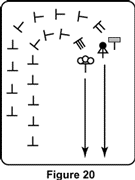
|
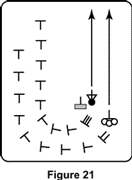
|
X. Finally, making the sharp right turn at the back that will take them forward again, the monarca’s line outside the malinche’s, everyone dances together down the hall (Figure 22). At the front of the lines, it is four abreast now, the monarca and malinche between the two lead dancers. The abuelo, dancing backward, leads it all.
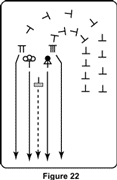
|
|
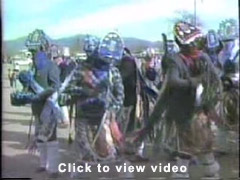
|
XI. The dance ends with a turn outward, a turn inward, one basic step performed backward and then forward, repeated three times, and the standard bow.
Note: For this dance only, as the men perform the basic foot pattern, they rotate in quarter turns, so that when they kick with the left foot they face left and with the right, right. This constant directional change gives the processional choreography a lyrical, even gyrating, quality.
| <- La mudansa |
Los
guajes ->
|